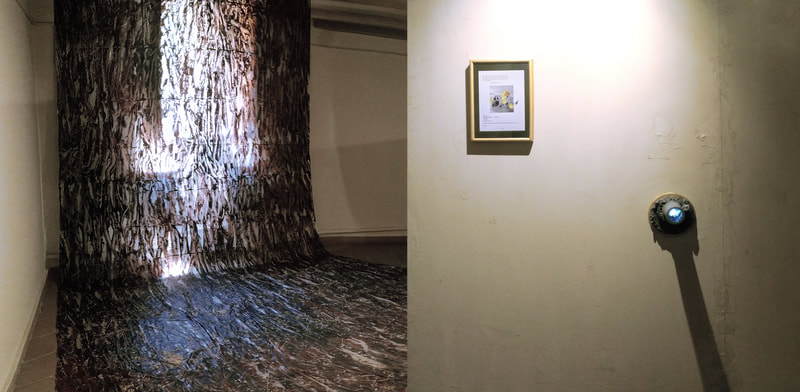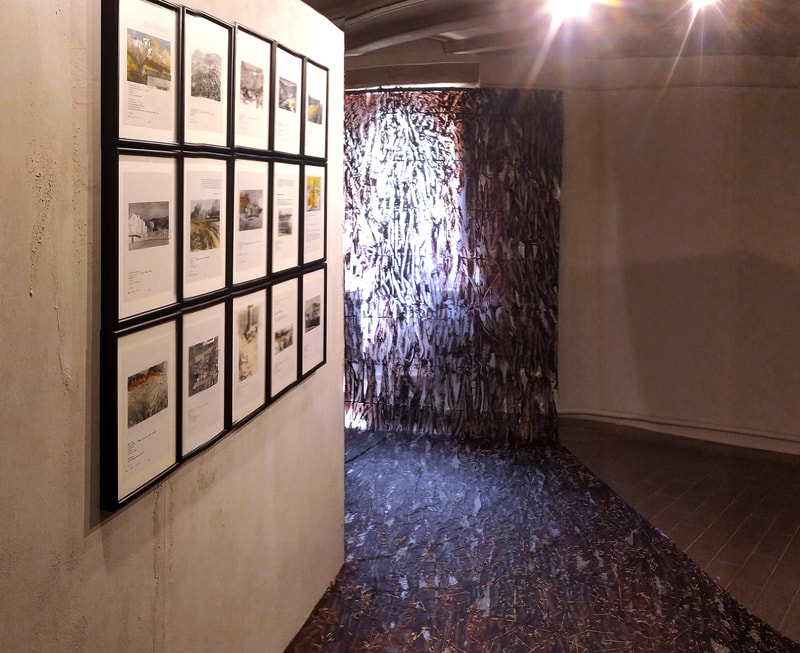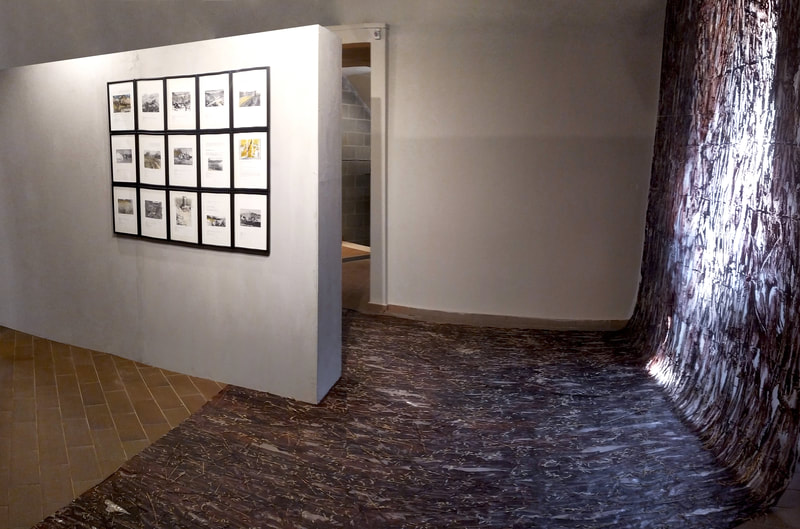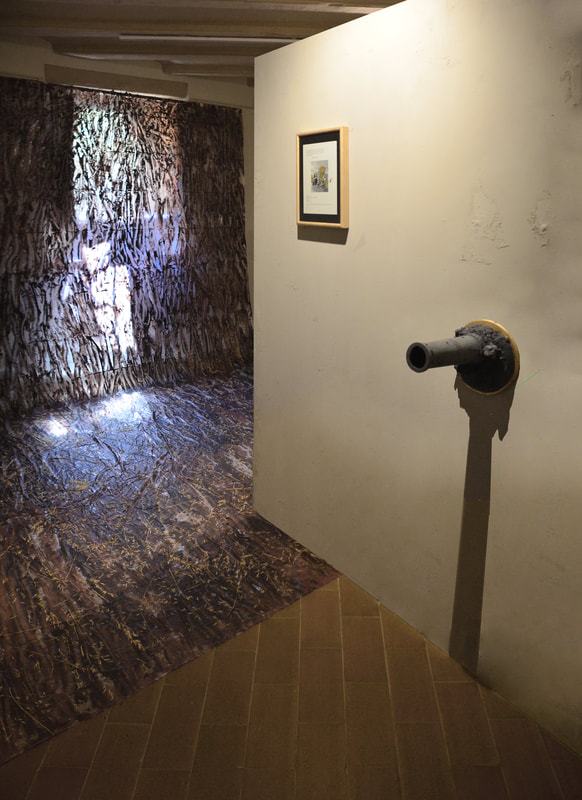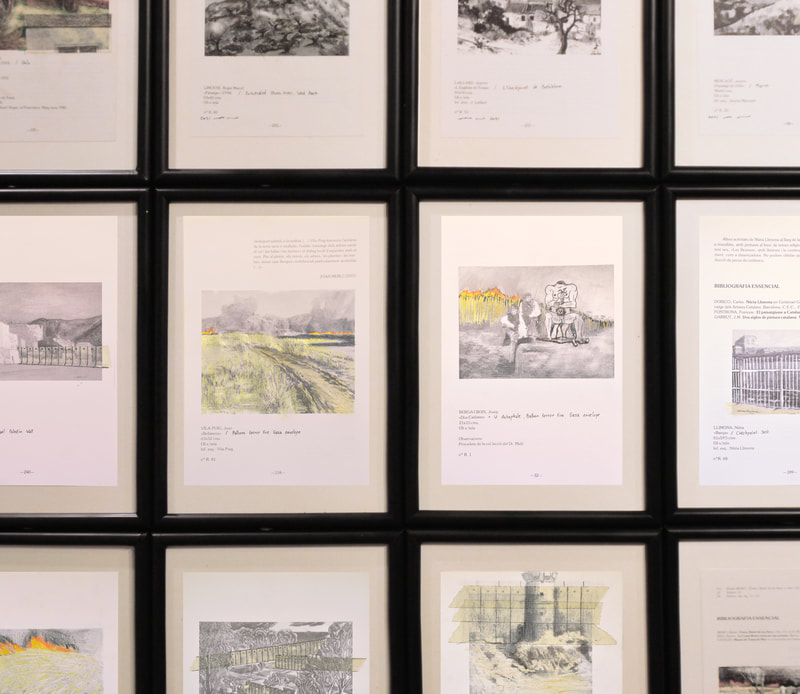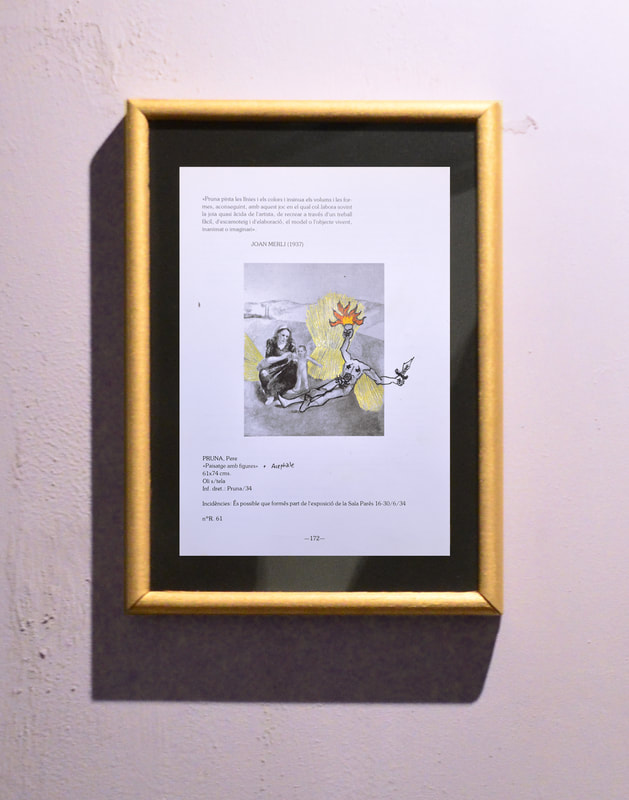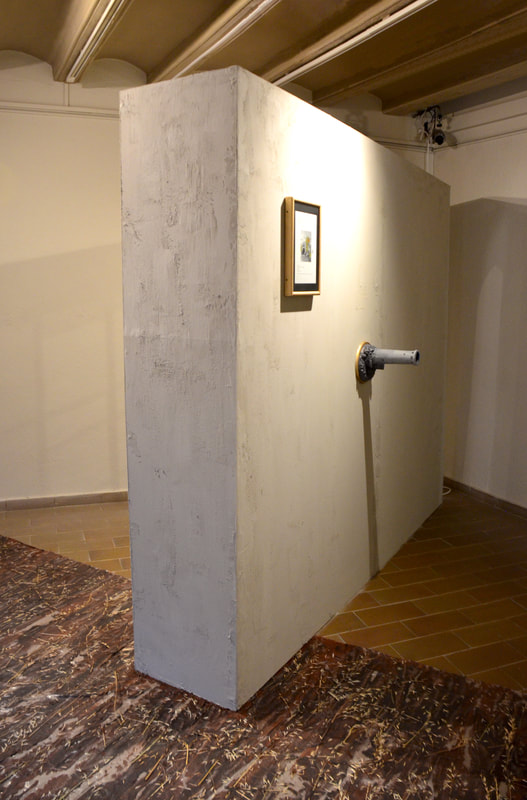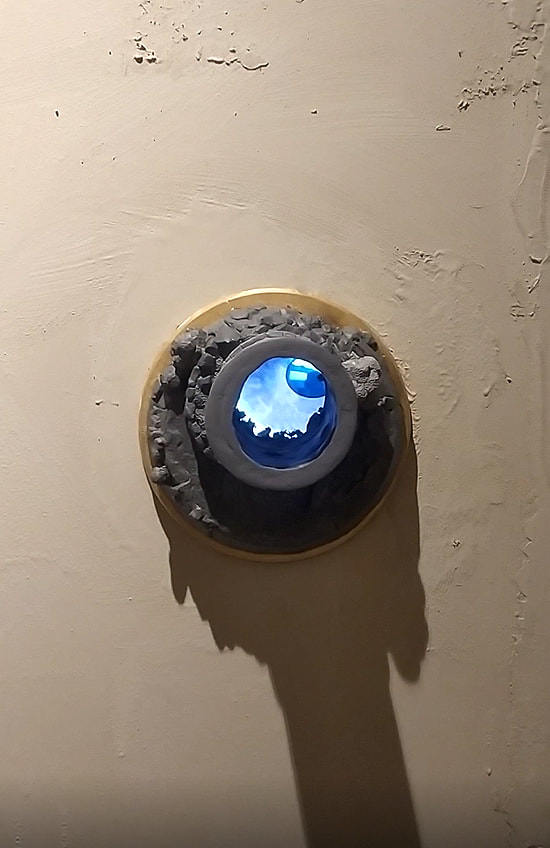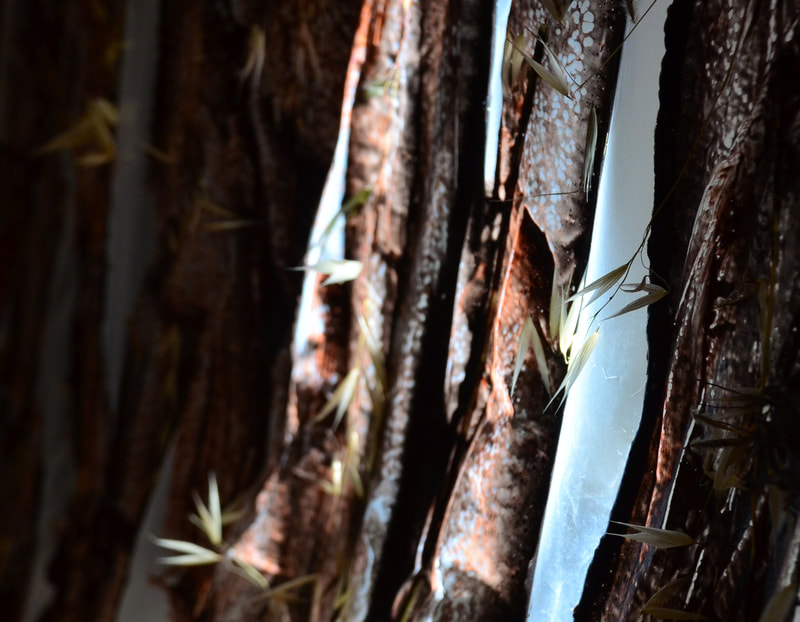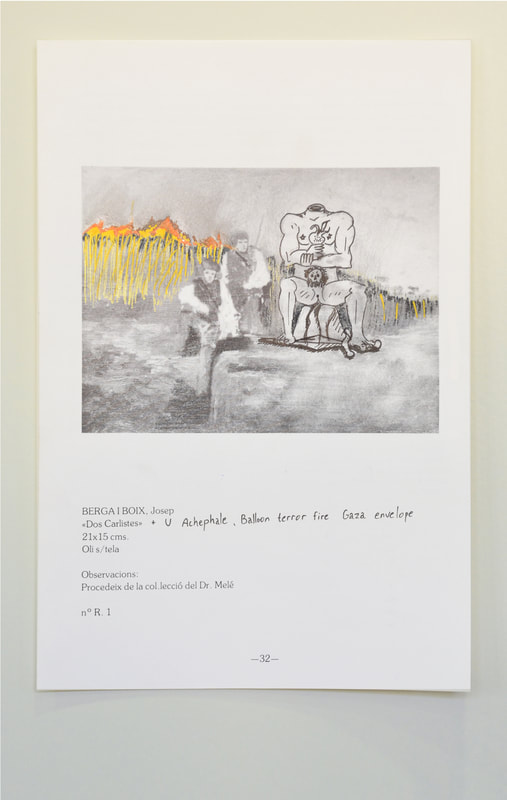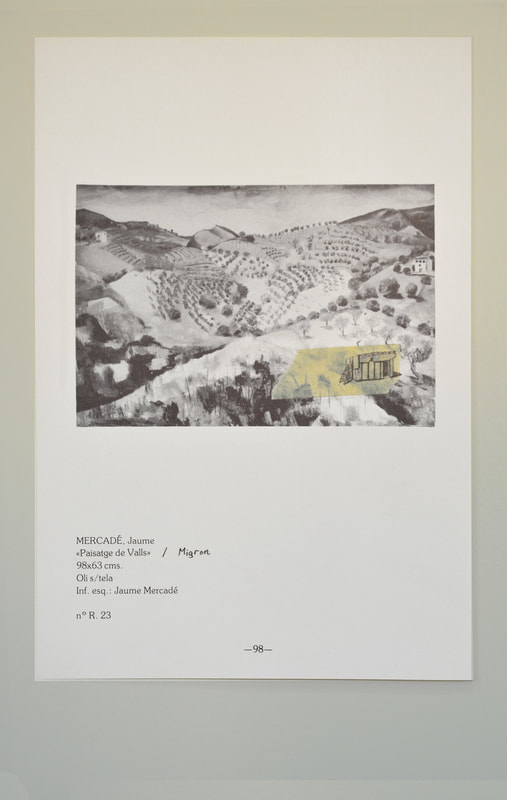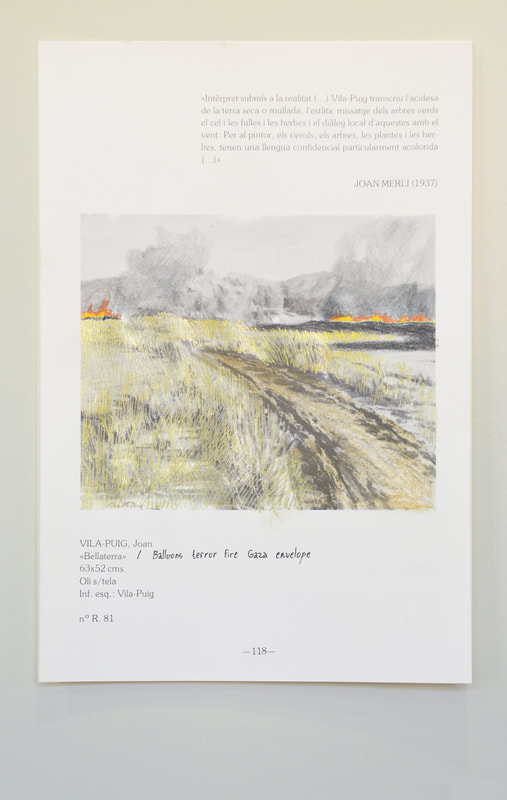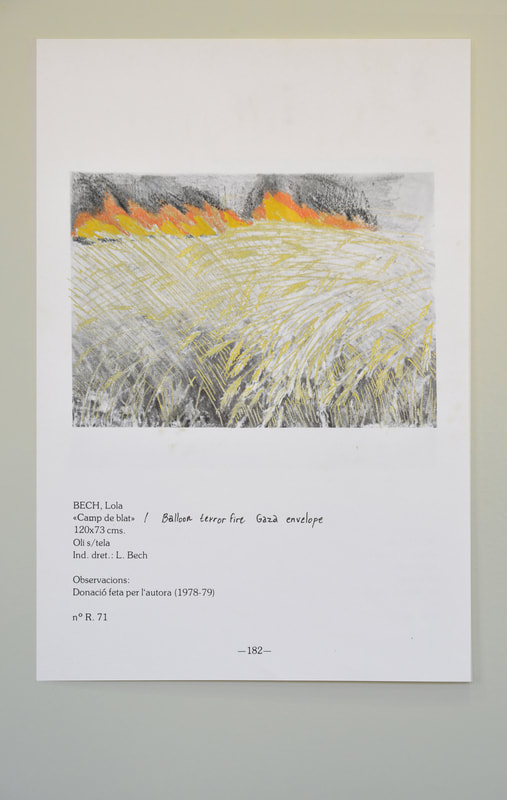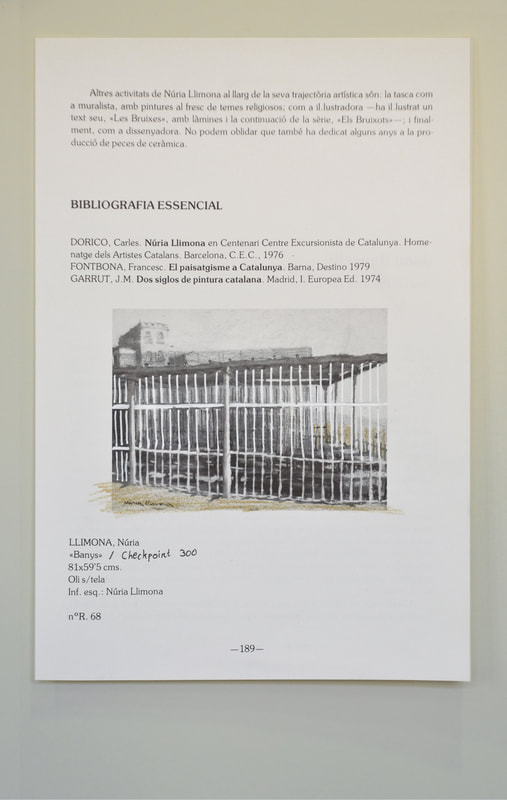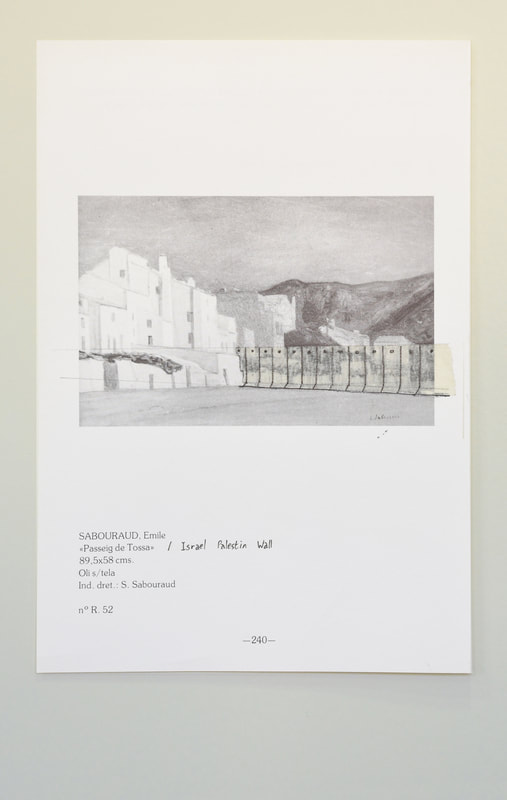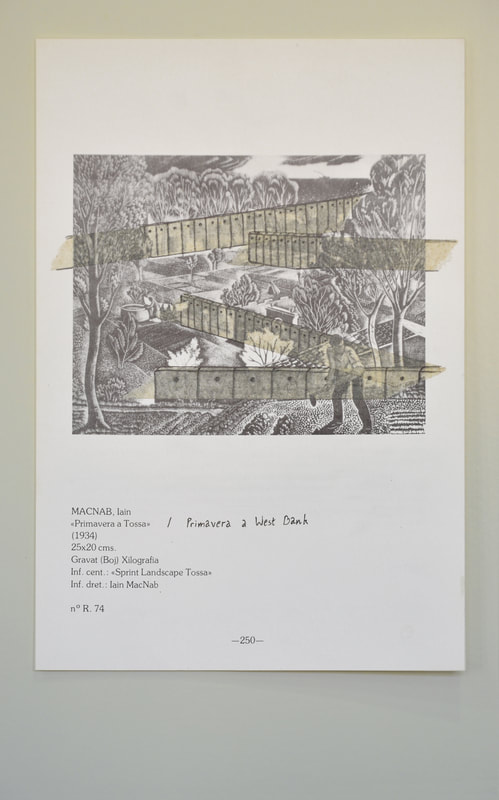A man with no head. A woman with no body Air.Cat 2021
Tossa de Mar Museo Municipal, Spain
Tossa de Mar Museo Municipal, Spain
Sound by Dean Katz Ritov deankr.com
The headless men, Acephale, meet the bodyles women Adallaad (A made up goddess). Acephale is motivated by ego and raging desires while Adallaad is the goddess of acceptance who provides life and space. He is violent, he conquers and imposes only one narrativ at a time. She facilitates the possibile existence of diverse narratives. He prefers to forget and denounce. She demands critical contemplation on the relation between narratives - places - worship and its projection on history, local and human.
The installation ' A man with no head. A woman with no body' contains two main parts: Acephale's wall and Adallaad's earth.
On the wall: drawings from the series “Redemption" where recognizable elements representing the Israeli-Palestinian conflict (the separation wall, checkpoints, typological settlements buildings, olives trees and field-fire at the Gaza envelop...) are drawn on landscape paintings reproductions from the end of the 19th century to the beginning of the 20th century - colonial times. Settling in Tossa's landscape paintings from the museum municipal collection, Ritov appropriates, and associates them with conflict-areas of Israeli geography. The act of planting elements in landscapes is violent. The landscapes are transported from their original time and place to another context elsewhere.
The 'earth' installation is the shape of Adallaad as the memory Goddess who sees everything, and gives weight to human action. Adallaad emerges from philosophy to the place; from history to the present. All memories are installed within the wild wheat seeds.
The headless men, Acephale, meet the bodyles women Adallaad (A made up goddess). Acephale is motivated by ego and raging desires while Adallaad is the goddess of acceptance who provides life and space. He is violent, he conquers and imposes only one narrativ at a time. She facilitates the possibile existence of diverse narratives. He prefers to forget and denounce. She demands critical contemplation on the relation between narratives - places - worship and its projection on history, local and human.
The installation ' A man with no head. A woman with no body' contains two main parts: Acephale's wall and Adallaad's earth.
On the wall: drawings from the series “Redemption" where recognizable elements representing the Israeli-Palestinian conflict (the separation wall, checkpoints, typological settlements buildings, olives trees and field-fire at the Gaza envelop...) are drawn on landscape paintings reproductions from the end of the 19th century to the beginning of the 20th century - colonial times. Settling in Tossa's landscape paintings from the museum municipal collection, Ritov appropriates, and associates them with conflict-areas of Israeli geography. The act of planting elements in landscapes is violent. The landscapes are transported from their original time and place to another context elsewhere.
The 'earth' installation is the shape of Adallaad as the memory Goddess who sees everything, and gives weight to human action. Adallaad emerges from philosophy to the place; from history to the present. All memories are installed within the wild wheat seeds.
